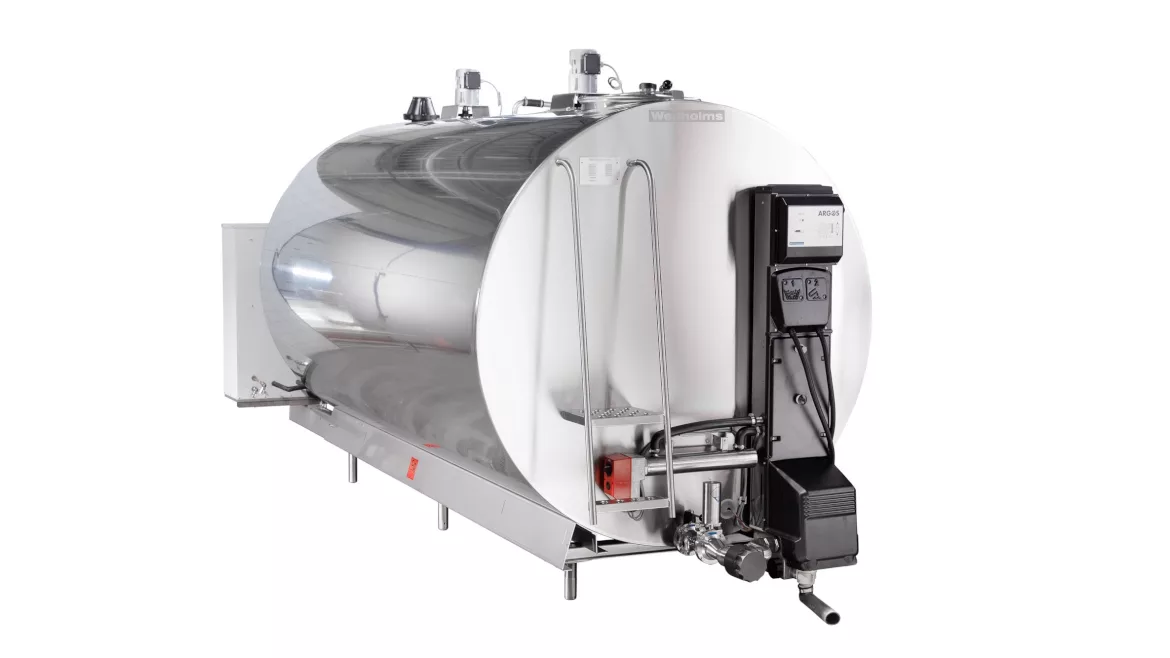Refrigerants/Condensers/Evaporators
Milk Cooling Tank Compatible with Revised F-Gas Regulation

Image courtesy of Wedholms
Wedholms is introducing the first milk cooling tank in the European market to use CO2 as refrigerant in a standard cooling system of the direct expansion cooling type. The tank is compatible with the revised F-gas Regulation that will be mandatory in the European Union from January next year.
The DFC 953 range of milk cooling tanks is available for robotic milking with 1-8 robots and with capacity ranging from 3,200 liters to 30,000 liters. A variety of adapter kits is available. The compressor of the DFC 953 range of milk cooling tanks operates with frequency control, running at exactly the speed required by the process, the company says. A small batch with 20 liters of milk is refrigerated, to exactly the right temperature, just as effectively as a larger ones of 200 liters, avoiding formation of ice in the tank.
The control system provides a wide range of options for efficient agitation and temperature control as well as advanced alarm functions.
A home consumption button allows users to obtain milk for their own needs.
Thorough cleaning is provided by a spray head, designed to eliminate calcium deposits and bacteria growth across the entire inside of the tank with a powerful water jet.
The high energy content of compressed CO2 produces heat as a byproduct of the process. This is recovered by the DFC 953 system and used to provide hot water for auxiliary systems.
Direct expansion cooling is the most common type of cooling system. It works on the principle that the temperature of the gas is lowered when the pressure is reduced and the gas expands. The cold gas absorbs heat from inside an enclosed space and releases its heat content on the outside.
Synthetic refrigerants, such as hydrofluorocarbons, are currently being phased out by the European Union. According to the revised F-gas Regulation, recently signed into EU law, all new self-contained refrigeration equipment, with the exception of chillers, installed from January 2025 must use refrigerants with a GWP (global warming potential) value of less than 150. Existing systems may still be used and repaired for the remainder of their economic life. However, effective from 2032, refrigeration systems using refrigerants with a GWP value above 750, apart from chillers, can no longer be refilled during maintenance and service.
Looking for a reprint of this article?
From high-res PDFs to custom plaques, order your copy today!






